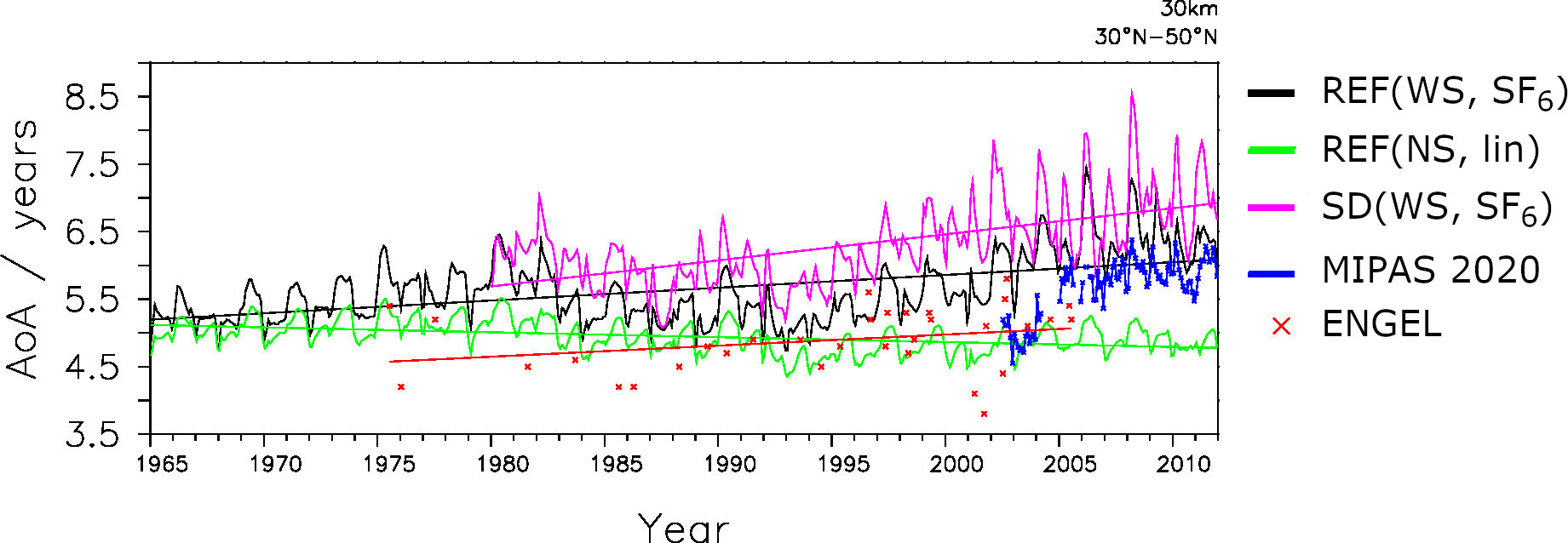Model simulations with mesospheric SF6 sink included resolve the discrepancy between model age of air becoming younger in the Northern hemisphere versus observations of age of air with positive trend

The figure shows modelled age of air for 30 km and 30 - 50 N from several EMAC model runs, and observed time series of age of air. The observations are displayed in red (balloon sampling data) and blue (MIPAS data); the model runs with the mesospheric SF6 sink and the realistic increase of tropospheric SF6 included are presented in black (free running model, REF calculation within the CCMI framework) and pink (EMAC with specified dynamics); all these data sets show a positive trend of age of air with time; the model run without mesospheric SF6 sink and an idealized linear SF6 increase in the troposphere is the only model run (green) with decreasing age of air.
The study by Loeffel et al. (2021) demonstrates that the mesospheric sink of SF6 plays a dominant role in understanding the measurement of the age of air on basis of this tracer. SF6 is destroyed in the mesosphere via several chemical reactions, with electron attachment as the most prominent one. SF6 poor air, re-entering the stratosphere after its path through the mesosphere is erroneously assigned to a very high age. Since the SF6 sink reactions, as all chemical reactions, scale with the available amount of SF6, the amount of destroyed SF6 becomes larger with increasing lower-atmosphere SF6 levels, and finally outweighs the expected increase of SF6 due to age of air becoming younger in an accelerated Brewer-Dobson circulation under climate change.
Detail can be found under https://acp.copernicus.org/preprints/acp-2021-232/
